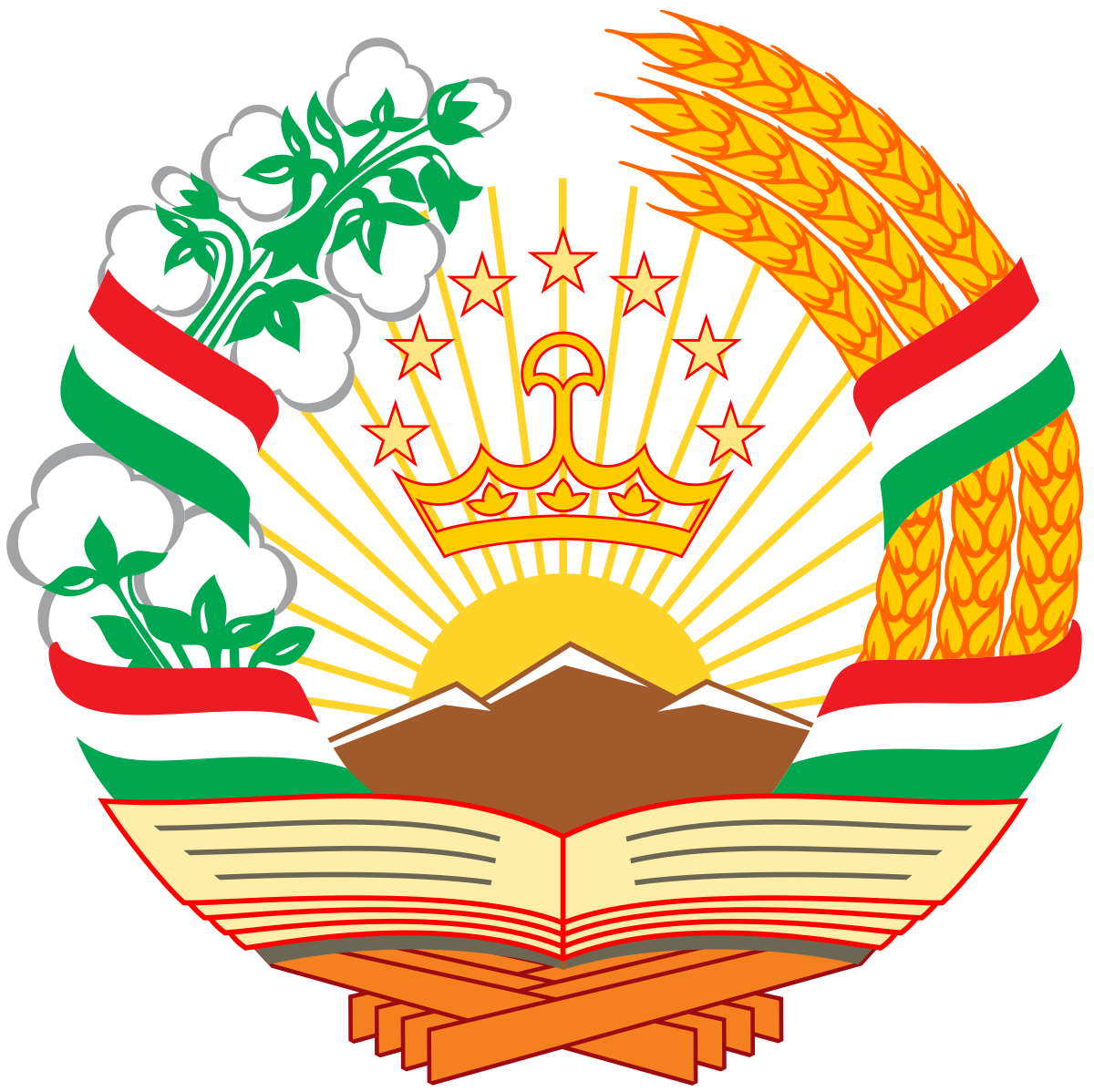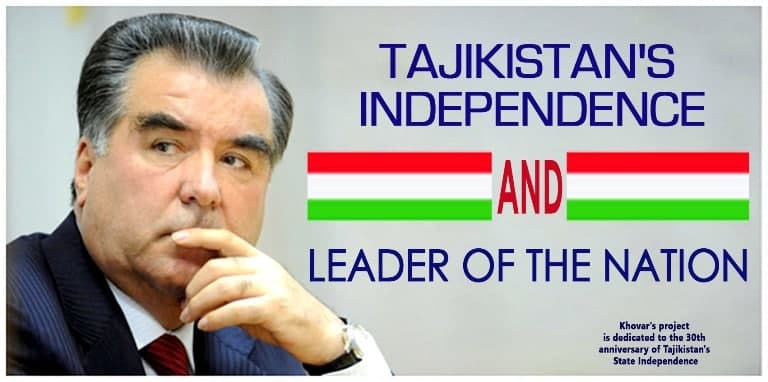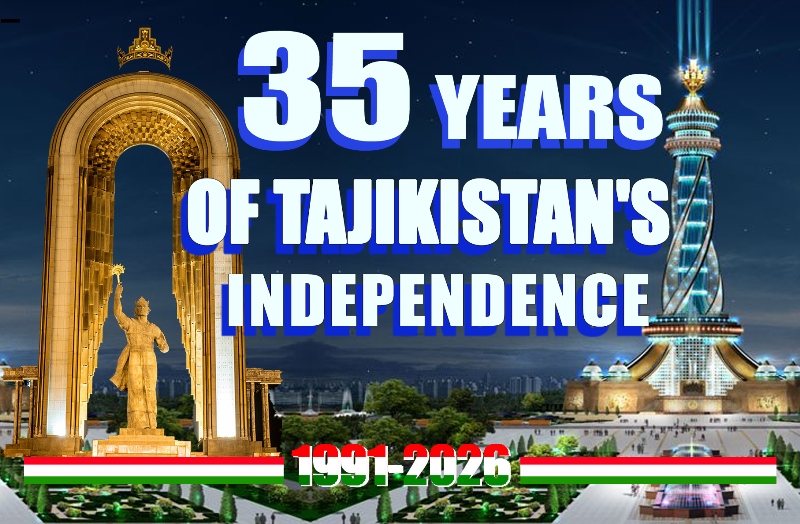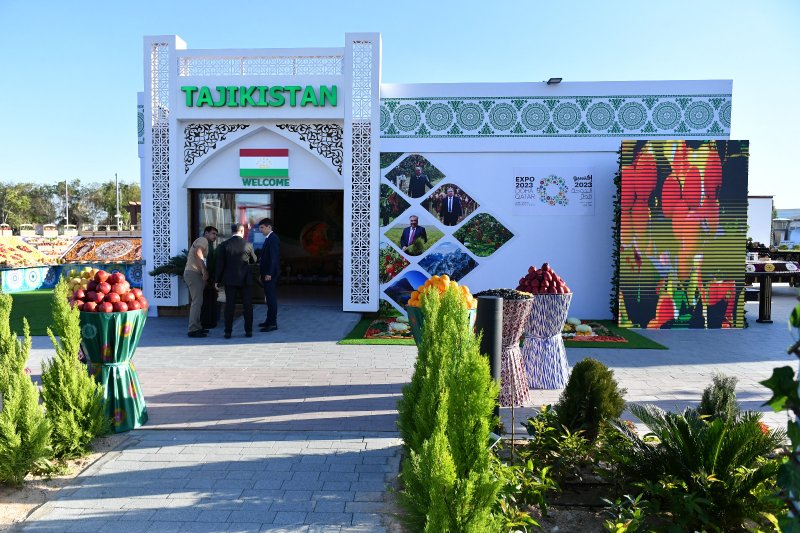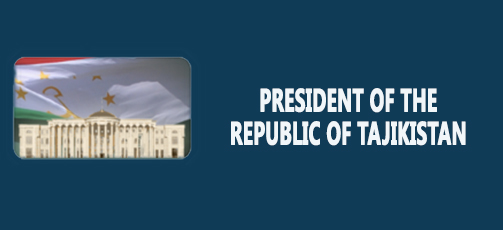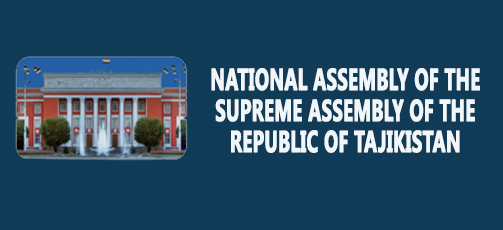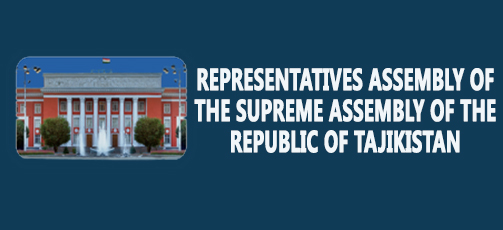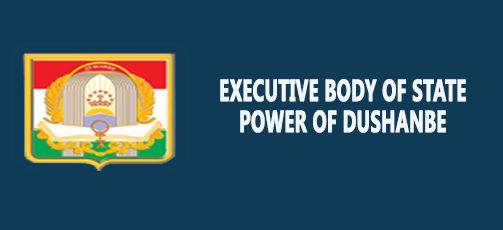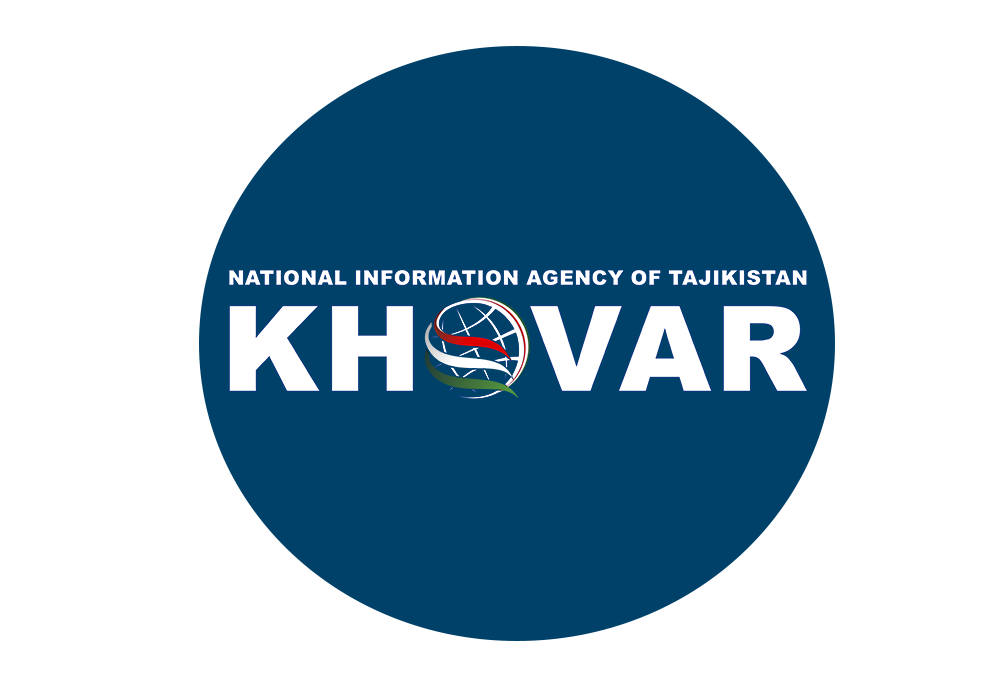Culture and Education
Education and Science. Qualitatively new relations emerged in the history of education of the Republic of Tajikistan by the support of the President of the country Emomali Rahmon during the state independence of the Republic of Tajikistan in order to implement the state policy, which are reflected in the Constitution of the Republic of Tajikistan as well as in the laws and other legal acts.
Despite the difficulties and troubles of the past time, the Government of the Republic of Tajikistan considers education as one of the priority areas of the country and protects it.
In 1991-1992 academic years, the number of general education institutions reached 3179, which 614 of them were primary schools, 634 schools of general compulsory education, 1916 schools of general secondary education, a gymnasium and 14 schools for children with mental and physical disabilities. In 2010, a total number of those facilities reached 3,747, including 540 primary schools, 678 main schools, 2,311 secondary educational institutions. Thus, during this period the number of schools increased by 518. In connection with the transition to self-financing of secondary educational institutions, 113 day schools — branches at high schools were opened.
At the time of independence a lot of changes have been made to the establishment of new educational institutions and the reconstruction of the existing. Directly with the state support 1200 school buildings designed for 311 thousand students were put in commission in the country.
Opening of new modern schools and taking into account the emergence of new methods of teaching various subjects gave a great leap in education. If in the 1991-1992 years, only one new modern school (Gymnasium) was functioning, then in 2010 their number reached 157, 89 gymnasiums (61 public, 28 – not state), 59 high schools (53 state, 6 not state) and 12 private schools covering 70,030 students (including 21,965 girls).
The establishment of modern institutions — high schools and presidential schools, in particular the Presidential Lyceum — a boarding school for gifted children in Dushanbe, the President’s school for gifted children in Chkalovsk, the Presidential Lyceum named after Abuabdullo Rudaki for gifted children in Tursunzade present the great achievements in the sphere of education since independence.
The Presidential school for gifted students in Bokhtar district, the Presidential Lyceum for talented students in Khorog and the Presidential International School for gifted children in Dushanbe will be established at the beginning of 2011-2012 academic years.
During the years of independence the financing of secondary educational institutions has also increased and the bulk of financing was given precisely to this area of education. While in 2000 the secondary educational institutions were allocated 27.6 million somoni, in 2010 their funding totaled 707.3 million somoni.
Over the period of 2004-2008 406 schools with over 90 thousand places for pupils for a total of 83 million somoni were constructed and put into operation. In 2009, through the involvement of different funding sources (government, investment, private, non-government) 216 school buildings with 40 thousand places for pupils for a total of 124 million somoni were built and put in commission on the eve of Constitution Day of the Republic of Tajikistan.
Number of boarding schools is also increased over the independence. While in 1991 the number of schools was limited to 41 and 5 of them were national, in 2010 this number had risen to 78 with 13 of them being national.
During Tajikistan’s sovereignty about 200 arts of textbooks with the number of printed copies of 18 million and the total amount of 72 million somoni have been published. At that time the publication of textbooks for institutions in the Tajik language was completed. Nowadays, textbooks in Kyrgyz, Turkmen and Uzbek languages are being published.
65 primary professional and technical educational institutions are currently functioning in Tajikistan. In the 2010-2011 academic years, students were taught by 1210 teachers and 1077 masters.
The funding for secondary professional and technical institutions increased by 22 times since 2000.
The number of higher educational institutions since the independence has increased. While in 1991, 13 high schools operated, then the current number of institutions of higher education reached 30. 2073 candidates of sciences and 493 doctors of sciences (Ph.D.) give lectures to the students in these high educational establishments.
Over 20 years of independence, in accordance with the Presidential quota for students the hostel for girls, a «campus» for seekers and postgraduate students, the Faculty of Engineering and Architecture at the Technical University named after Academician M. Osimi, the Agrarian University of Tajikistan and houses for the teachers of the Branch of the University in Dangara, the branch of Tajik Pedagogical University named after S. Ayni and the dorms to it in Rasht district, a hostel for Khorog State University named after M. Nazarshoev, a building at the State University of Law, Business and Politics of Tajikistan, the building of the State Medical University named after Abu Ali ibn Sina, the sports hall of the State Pedagogical University named after S. Ayni were restored and rehabilitated, the building of the branch of Moscow State University named after M. Lomonosov were newly constructed, have been repaired and put into operation that shows a clear progress of the country and utmost attention given to the sector of education.
Thanks to the initiative of President Emomali Rahmon branches of Moscow State University named after M. Lomonosov, the Moscow Energy Institute and the National Institute of technological research of Moscow institute of steel and alloy are established in Dushanbe. We plan to open a branch of Polytechnical University of Kharkov in the near future.
From 1997 to 2010, more than 8,000 girls and boys from different parts of our country have been trained under the quota in professional and technical educational institutions.
In accordance with the Presidential Decree of 1st October 2010 a Scholarship for students in vocational technical schools and graduate students was established by the President of Tajikistan.
In order to develop the education, to raise the status of teachers and the number of employees in educational sphere, the Prize was established by the President of the Republic of Tajikistan in the field of education in accordance with the Presidential Decree of 18 February 2008. On the basis of this decree, 5 prizes of the President of Tajikistan were set for teachers, 2000 U.S. dollars each and 14 people have won this award to date.
In connection with the proclamation of education of the Republic of Tajikistan as one of the priorities of social policy, the funding for this area in recent years has significantly increased. So, in 2010 1.092 billion somoni had been allocated to education, which made 4,7% of GDP. This figure compared with 2000 increased by 26.6 times and compared with 2005 by 4,5 times. The proportion of expenditure of the GDP in this area is also increased from 2.3% in 2000 to 3,5% in 2005 and 4,7% in 2010.
It is worth noting, that strong support is given to this sector through investments and grants along with the budgetary means of financing. Since 1998 and to date 14 investment programs and grants totaling U.S. $ 160 million was allocated with the support of international financial institutions for the pursuance of reforms in education.
In general, during the period from 1992 to 2010 950 school buildings for 250 thousand students with total cost of 470 million somoni have been built and put into operation. Studies show that over the period of independence building of schools, compared to 80th years of the last century increased by 1,6 times.
More than 20 important legal acts and documents, related to science issued during the independence of the Republic of Tajikistan, promoted development of the country’s science, financing of science sector, improving technical and equipment base of scientific institutions and etc.
Namely during independence, new research institutions were established in the country within the system of the Academy of Science of Tajikistan in order to enhance scientific research of the economic and social issues, including Institute of Economy, Institute of Demography, Institute of Water, Hydroenergy and Ecology, Institute of the State and Law, Nuclear and Radiation Security Agency, Scientific Center of Khatlon.
The Presidential Research Foundation was esteblished in 1996 with support of the President of the Republic of Tajikistan to financially support scientific research. According to the Resolution of the Government of the Republic of Tajikistan with a view to providing all necessary conditions for scientific research, all institutions and branches of the Academy of Sciences have gained a national status, which promoted effectiveness of the activities of scientific institutions.
During these years, a special attention was paid to development of exact and natural sciences. The Government issued “Program of the development of exact science in the Republic of Tajikistan for 2005-2008” in 2003, which played a crucial role in support and development of research in exact science sector, in provision of technical and economical base with experimental works, in preparing good conditions for education of scientific personnel and in enhancing international scientific cooperation.
Joining of the Republic of Tajikistan to the Convention on establishment of the International Scientific and Technical Center and organising the information agency within the Academy of Sciences of Tajikistan have also contributed to the development of exact science in the country, since Tajik scientists have gained more opportunities to access and use grants of international funds.
Scientific results that scientists of the Academy of Science have achieved during the independence of the Republic of Tajikistan embrace many spheres, such as mathematics, physics, astrophysics, seismology, geology, water, hydroenergy, ecology, biology, history, philosophy, philology, oriental studies, economics, demography and law: all these evidence high capability and might of Tajik science. More than 300 scientific works and findings of Academy of Sciences’ scientists were submitted for practical implementation in manufacturing sector and majority of them are being implemented in the enterprises and factories of the country. Results of research executed by researchers of the social science play a big role in increasing patriotic spirit, national self-consciousness, moral and legal education of the country’s citizens.
International relations of the Academy of Sciences of Tajikistan with international research and scientific centers, especially with research institutions of Russia, India, Austria, China, Japan, USA and members of CIS are broadening. Academy of Sciences is a full-fledged member of the International Association of Academies of Sciences, Association of Academy of Sciences of Asia, Academy of Sciences of developed countries and the International Council for scientific centers. For the time being, Academy of Sciences maintains scientific and technical cooperation with 7 countries of the world under 10 agreements and participates in an implementation of 5 interstate agreements. Moreover it is a member of 5 international organizations, commissions and committees. More than 200 scientists cooperate with scientists of international research institutions around the globe. The results of many Tajik scientists’ and researchers’ works have received international acknowledgement from the international scientific organizations and many of them were bestowed international prizes and awards.
During the independence, workers of research and scientific institutions of the Academy of Sciences of Tajikistan have published more than 10000 research works, in particular, 1200 books and dissertations, article collections and etc. During last 10 years, more than 3000 articles and theses of the researchers and scientists of the Academy of Sciences of Tajikistan were published in authoritative journals and books in CIS, America, Europe, which testifies acknowledgment of Tajik scientists and their scientific works’ yields.
Favorable conditions are provided in regard to preparation of research scientists and provision of research institutions with the young research personnel. More than 150 researchers, candidates and doctors of sciences, younger than 35 today work in research institutions of the Academy of Sciences. During 2001-2010, nearly 250 people graduated from the PhD studies program of the Academy of Sciences. About 120 doctoral and more than 250 candidate dissertations have been defensed at the candidate and doctoral dissertation defense councils.
Language and Culture. One of the greatest achievements of the independence was attainment of language independence and giving a status of a state language to Tajik language. During the independence, due to the language policy the most important basis of nations’ endurance – national language was approved as state language and has become an official language of economical, social, political, and cultural office work and records management, gaining a special status. We can proudly say that the state language in our country is under permanent attention and support of the country’s leader Emomali Rahmon, for its better protection and development on the President’s proposal the new draft Law “On the State Language of the Republic of Tajikistan” was submitted and ratified.
With the view of gradual and successive implementation of the public policy in regard to official language and language-related laws, the Government established a new body – Committee for language which testifies a consistent attention of the President and the Government of the Republic of Tajikistan to protection and respect of national values, in particular, to language in independence period.
During the independence, culture as a spiritual embodiment of the nation’s image, as a unitor of mental and moral virtues, as an explanator of ancient and modern history, tradition, ethics and other national shrines, plays a worthy role in society.
Many remarkable changes have occurred in different spheres of culture for the reinforcement of this trend thanks to continuous attention and concern of the President of the Republic of Tajikistan Emomali Rahmon, which resulted in a striking prosperity of culture in the country.
Owing to the attention and cultural policy of the President of the Republic of Tajikistan Emomali Rahmon Days of “Shashmaqom” and “Falak” were declared mainly for the revival and enhancement of classic and popular music. These two ensembles attract the best singers, prepare programs for television and radio, and annually report about their activities before Tajik audience.
During this period, “Falak” ensemble was established in 2001 for the preservation and support of Tajik folk traditional art, which embraced the best singers and performers of Falak style. Today, the band has found its unique style and image and is enriching the golden national treasury of Tajik music art.
Dancing ensemble “Gulrez” was a new initiative, formed in 2000. This ensemble brings innovations. “Gulrez” ensemble is today not only an embellishment of scenes at country’s important events; however it also represents our culture on the international arena throughout the world. The ensemble also could be named a good school and a place for skills’ practice for young performers. Young performers learn here art lessons, while the best of them are hired, or receive recommendations for institutions.
With the view of creating favorable space for the development of international relations, Days of Culture of the Republic of Tajikistan were held in Germany, Uzbekistan, Russia, France, Kazakhstan, China, Belarus, Azerbaijan, India, Iran and Turkmenistan. The Cultural Days were conducted on a high grandeur and solemn level and performers introduced the international audience to rich Tajik ancient and contemporary culture.
At the same time, Days of Culture of such countries as Russia, Kyrgyzstan, Belarus and Turkmenistan were held in our country.
Only within 2007-2010, under the “Program for development of librarian sector in the Republic of Tajikistan for 2006-2015” 2,5 million Tajik Somoni was allocated from the Government of the Republic of Tajikistan for establishment of technical and financial base of country’s libraries, renewal of their funds with new literature, renovation of the libraries’ buildings, equipment with furniture and other needed facilities. During last three years, more than 195 thousand pieces of books and other printed materials were delivered to the libraries funds of the country under “Korvoni Kitob” (“Caravan of Book”) program.
Independence has provided a good opportunity for new cultural and artistic innovations, conservation of popular traditions, attraction of young people to artistic activity and for strenghtening of interregional cultural relations in the country. Several important cultural and artistic arrangements were organized and successfully held, including national library competition “The Best Library”, competition of popular theaters “Drug abuse – disaster of the century”, “Motherland, I am your sacrifice”, competition of the country’s museums “Mirror of History”, competition and festivals of dance and music ensembles “We are flowers of one meadow”, competition of clubs “Venue of knowledge and skills” and festival-competition of popular creativity “Andaleb”.
Periodic publicaions are considered one of the most important features of a democratic society. Remarkable changes have occurred in this direction as well.
Favorable conditions created in the country for the freedom of speech promoted the increase of the amount of mass media agencies, particularly, private newspapers and magazines. If in 1995 only 69 newspapers and 19 private journals were registered, in 2000 this amount has achieved 84 and 25 accordingly and in 2005 – 154 and 30 respectively.
Today, 268 newspapers, 136 state, private, social and field journals, 8 informational agencies, which broadcast on Tajik, Russian, English, Farsi and Kyrgyz languages operate in the country.
Publishing of written heritage for children and adults from “Literature stars” and “School library” collections in the publishing houses of “Adib” and “Maorif va Farhang” have increased a quality. Namely owing to state independence, readers enjoyed such invaluable books as “Holy Qur’an”, “Masnavii ma’navi”, “Hidoyai Sharif”, “Shohnoma”, “Kobusnoma”, “Kimiyoi khirad”, “Akhloqi Muhsini”, “Sarguzashti Hotam”, “Tutinoma”, “Guliston”, “Buston”, “Shashmaqom” and etc.
One of the good evidences of the independence era is that National Library named after Firdavsi and National Museum named after Behzod were given national status. Moreover, the very first conservatoire was established over this period.
In Tajikistan, where there are more than 2000 historical and cultural memorials, 36 unique memorials, including mausoleums, museums, fortresses, madrasas, and minarets in the cities, regions and districts were renovated and reconstructed during the independence under the personal leading support of the head of state. At the same time, with a view to further preserve and use of historical and cultural memorials, Hulbuk historical and cultural Conservation area, National Museum in Danghara, State Enterprise “Republican historical and cultural Compound Panjrud” had been renovated.
In 2011 on the occasion of the celebration of 20th anniversary of state independence of the Republic of Tajikistan, two magnificent buildings of National Library and National Museum will be put in commission, giving the city of Dushanbe a new image and beauty.
During last 20 years, many international events where global experts on Tajik literature participated, were held in the country with attendance of guests from all over the world. This testifies respect and reverence of the Tajik President towards valuable history and culture of the Tajik nation. All these prove the level of concern and support the head of state displays to the far past and national civilization of his nation.
In particular, a number of important events were held, including, the International Symposium “The glorifier of justice, honesty and brilliance of intelligence”, devoted to thousandth anniversary of “Shohnoma” of Abulkasim Firdavsi on 5 September 1994, celebrations of 680th anniversary of the prominent oriental researcher and thinker Mir Said Ali Hamadoni in September 1995 and festive occasions of 675 anniversary of Hoja Kamol in 1996. All these celebrations will remain in the participants’ hearts for the long time. At the same time, the monuments of Hoja Kamol, and the nations’ eminent son, the Hero of Tajikistan – Bobojon Gafurov were unveiled in the presence of participants of the Third Symposium of Tajiks of the World and Tajik-speaking people of the world in Khujand which had been unique initiative in honoring the past and immortalizing of great nation’s personalities.
The 90th anniversary of the academician Bobojon Gafurov in 1998, festive celebration of the 90th anniversary of poet Mirzo Tursunzoda on 27th of October 2001 and celebration of the 1000th anniversary of the great oriental thinker Nosiri Khusravi Kubodiyoni have brought a new spirit to immortal historical and literature heritage of the nation.
Many celebrations, devoted to great scholars, thinkers, political feagures of Tajik people, such as Abulkosim Firdavsi, Mir Said Ali Hamadoni, Kamoli Khujandi, Umari Khayam, Bobojon Gafurov, Mirzo Tursunzoda, Muhammad Osimi, Bahodur Iskandarov, Gulom Aliev, Alouddin Bahovaddinov, Loik Sherali and many others, contributed into a new interpretation of their heritage, to acquaintance of science and culture of the independent Tajikistan to the entire world and to the increase of a sense of national pride of the people.
In the range of political and cultural events, celebration of 2500 anniversary of the ancient city of Istaravshan, 2700 anniversary of ancient city of Kulob, cultivation of historical monuments, announcement of Hulbuk as the cultural reserve, conversion of several beautiful country’s districts into tourism zone, testify that Tajikistan has embarked on the path of steady development.
On 5 October 2009, the International Symposium “Heritage of Abuhanifa and its role in the dialogue of civilizations” was held in Dushanbe with the participation of the President of the Republic of Tajikistan. The event was devoted to 1310th anniversary of one of the great Islam thinkers – Imam Abu Hanifa and over 500 scholars from 50 countries and many local thinkers attended this event.
Celebrations devoted to the Year of the Founder and leader of Hanafi mazhab with attendance of the country’s President and scholars as well as distinguished political figures from many countries coincided with the beginning of the construction of the biggest mosque in Tajikistan.
The head of state Emomali Rahmon delivered a speech in front of foreign guests and capital residents, in which he acknowledged achievements of the state independence of Tajikistan and stressed, that revival of spiritual, cultural and religious values is one of the remarkable achievements and congratulated all participants and the people of the country with the beginning of the construction of the grand mosque in Dushanbe, which to be the biggest in the region.
These measures, having historical, cultural and international importance, allowed Tajik people to become more aware and awakened, to establish and strengthen its relations with Tajiks abroad, to again reinterpret its historical and cultural roots and to think over practical measures to enhance national pride and achieve national consolidation and unity.
TV and radio maintain deserved status in the media and are important means of propaganda and agitation, as well as the way of widespreading information, which form public opinion. In this regard, the head of state and the Government of Tajikistan have taken the appropriate measures in order to develop this area, to provide the high-quality broadcast programs, to support the expansion of regional broadcasting programs and to ensure financial security of employees.
Prior the independence, the radio broadcast in Tajikistan was carried out in two waves, in general, 32 hours, and television on one channel from 6 to 8 hours a day. However, owing to the independence of the country, television and radio continue to operate continuously with significant support and implication of the President of the Republic of Tajikistan Emomali Rahmon. The broadcasting programs are regularly maintained and treated by listeners and viewers.
Development in this area emerged mainly after 1998. The establishment of the program «Subh» on television in 1998, “Sadoi Dushanbe” radio in 1999 helped to fill the space in broadcasting. In a very short period of time, in order to carry out the order of President Emomali Rahmon expressed in his annual address to the Parliament, the government established a number of TV and channels, inclduing the channels «TV Safina in 2005, children and youth channel – “Bakhoriston” in 2006 and «Jahonnamo” TV in 2008.
Since 2006, the Tajik television switched to digital broadcasting. In total, the establishment of government channels «TV Safina”, “Jahonnamo», «Children and youth channel – Bakhoriston”” and radio “Farhang» facilitated to create 524 jobs.
A time of broadcast data channels reached by 9 — 18 hours, television switched to a continuous broadcast, a new system of public television was organized and developed in Tajikistan. Nowadays, the First Channel television of Tajikistan plays an important role in the system of information broadcasting and covers almost 99, 7% of the territory of the country and is broadcasted overseas in more than 50 countries around the world. The total broadcasting time for all four channels is 74 hours. “Jahonnamo» Channel broadcasts 24 hours a day. Broadcasting of the channel «Bahoriston» reached 14 hours a day.
Basically, after purchasing state independence we got the opportunity to establish state channels in the regions. In the first years of independence, from 1992 to 1994, three regional and one television channel were founded in Kulyab region. The spectators of these channels made up 50 to 65% of the inhabitants of the regions. Over 220 people and technical personnel are employed at all four regional channels today.
A new media appeared in Tajikistan since country got its independence. News broadcasts and private channels operate throughout the country along with public radio channels. To date, 44 radio and television organizations work in Tajikistan, including nine state-run television, 19 non-governmental (5 cable TV), 7 non-governmental and 9 state radio stations. All these tools, despite the type of ownership, contribute to improving the information space in the country.
During the independence, the Government of the Republic of Tajikistan to the extent possible observes traditions of Tajik cinema. Until 2005, the Government had only to follow the enterprises, which was carried out and shown movie, but in 2005 with the adoption of the «Cinema Development Programme 2005-2010» Tajik cinema addressed difficult challenges and made great strides forward. During this time, 11 full-length feature films were recorded and this number is a good indicator given the current conditions. Three full-length feature films were recorded in 2008, which is comparable with the achievements of the Tajik cinema in 1970-1980’s of the last century. During this period, with the support of the Government of Tajikistan the largest cinemas «Kokhi Jomi», «Kokhi Tajikistan», «Zebunisso» and «Vatan» had been reconstructed and put into operation.
Role of women in society. From the very beginning of the independence the issue of improvement of women’s situation, work and living conditions has always been in the center of the President and the Government’s attention. To this end, the Government of the Republic of Tajikistan, taking into account political, economic, cultural and traditional reality, has chosen a definite policy aimed at improving social status of the women.
In order to provide more active participation of women in political, social, cultural life of the society and public administration, the Government has approved several legal acts that are very important for increasing of women’s role and authority in creating of democratic society.
In September 1998, the Government has issued a resolution on “National Plan of Measures of the Republic of Tajikistan towards Women Empowerment and the importance of women’s role for 1998-2005 years”. The other crucial document is the President’s Order “On measures to elevating the role of woman in society”, it acknowledges the fact that Tajik society is on its way to secular world society.
A Resolution of the Government of the Republic of Tajikistan, issued on May 29, 2010 titled “National Strategy for Women Empowerment in the Republic of Tajikistan” and dozens of other legal documents created a solid ground for the improvement of social, economic and cultural situation of families, rising up the role of women in society, active participation of women in public administration, education of personnel from the pool of capable girls and women, enhancement of legal knowledge of women and improvement of the situation of mother and child.
With a view to implementing the Order of the President of the Republic of Tajikistan “On measures to elevating the role of woman in society” as of 3 December 1999, the practical measures were made in the state authorities. Today amount of women, being hired for the management positions in central and local state bodies is increasing. For instance, if there were only 123 women in central state organs in 1995, holding management positions and their amount has increased up to 213 in 1998. In 2002, 30 women were appointed by the President and the Government for the central management vacancies. Today, this amount makes up 39 women.
The general amount of women on state service constitutes today 3 612 people (23,4 %). In particular, there are 1 975 women in central state organs, 1 637 women in local state authorities, working as state servants. One of the Vice Prime-Ministers in the Government of the Republic of Tajikistan is vested for the supervising the issues related to women and their role.
The Parliament elections are evident for the progress of political thought of women and their direct participation in state management process.
Women in Majlisi Oli of the Republic of Tajikistan after 2005 elections were 11 and 4 in Majlisi milli of the Majlisi Oli of the Republic of Tajikistan. As to 2010, 5 members of Majlisi Milli and 12 parliament members in Majlisi Namoyandagon were women. The representation of women in the local state organs has also increased. The number of local state workers among women today constitutes 517 people.
In 2010, on the high leading positions of the ministries and state agencies, the percentage of women was 15,5 %, on the positions of deputy-heads of districts and cities — 95,8 %. The number of women – heads of districts and cities now accounts for four.
The number of women – working in a diplomatic sector is 15, while the Deputy Minister of Foreign Affairs is woman. Women also work in the capacity of consul, attache and the ambassador’s secretary.
The Resolution of the Government of the Republic of Tajikistan as of 19 April, 2001 “On a procedure of the acceptance of girls to the higher education institutions according to the President’s quota for years 2001-2005” motivated the girls from remote mountainous districts to continue their education. 7211 girls from remote villages of the Republic of Tajikistan were accepted under the President’s quota in high educational institutions only based on interview from 1997 to 2011.
One of the achievements of the country’s independence was the establishment of the Education Center “Charoghi Hidoyat” to orphan girls, where more than 100 girls live up to now.
According to the Resolution of the Government of the Republic of Tajikistan as of 4th July 2006 up to 2010, 20 Presidential grants were issued (10 grants in amount of 10.000 Tajik Somoni and 10 grants in amount of 5.000 Tajik Somoni) in order to develop small business, to create new jobs for girls and women, enhance coordination between social bodies and state power authorities and their education. After acceptance of the Order of the Government of the Republic of Tajikistan as of 4 September 2008 “On establishment of Presidential grants for business activity of women for 2008-2010” more opportunities appeared for business women in the country.
The results of the realized projects show that Tajik women have succeeded in such sectors as national crafts, establishment of small plants and manufacturing facilities, carpet weaving, basket making, embroidering, sewing, animal breeding, poultry breeding, fishing, drying fruits and development of the agricultural sector.
Youth and Sports. Tajikistan’s attainment of official independence played an important role in making remarkable achievements in the economic and social, political and cultural life of youth and made it possible to establish state policy on youth and to gradually provide wide range of opportunities for the development of youth in a difficult period of structural and public changes, within which the contribution of young people is highly appreciated.
Political situation in all periods relies on different potentials, which play an influential role in the political, social and cultural life of any state. First of all it is necessary to establish political system and structures or organizations for these potentials to appear.
The establishment of the state authorized agency within the structure of the Government – Youth Committee under the Government of the Republic of Tajikistan in 1997 is the significant achievement of the sector. Thus, it is 14 years that the state authorized agency on youth affairs implements the state policy on youth throughout the country.
Regular meetings of the President of the Republic of Tajikistan with the representatives of the country’s youth prove that head of state fully believes in the leadership potential of the youth. Therefore, every meeting with the country’s youth starts with an attractive event and unique initiative.
Particularly, based on the legislative initiative of the President of the Republic of Tajikistan, by May 22, 1998 Resolution of the Majlisi Oli of the Republic of Tajikistan, 23rd of May was declared as the Day of the Youth of Tajikistan. Since 1998, 23rd of May is officially celebrated as the Day of the Youth of Tajikistan, which proves the special importance and status of the youth in the country.
National Concept on the youth policy of Tajikistan was adopted and six Awards of Ismoili Somoni for young scholars and researchers, Award of the Committee for literature, journalism, arts and architecture, Council of young scholars and researchers, Special Fund of the President of the Republic of Tajikistan for training of specialists in foreign countries and Grants of the Government of the Republic of Tajikistan for youth NGOs for patriotism were founded. The number of Presidential quota and scholarships have been increased and the new edition of sectorial programmes of “Youth of Tajikistan”, “Patriotism Education of the Youth of Tajikistan” and Improvement of the Health of the Youth of Tajikistan are adopted.
Another event in the life of youth of the country is the start of operation of youth centres in various towns and districts of the country. At present, 45 youth centres operate throughout the country and the construction and establishment of youth centres is under way.
By the instruction and personal support of the President of Tajikistan, during recent years a number of stadiums, including stadiums with 25000 seats in Khujand city, with 16000 in Tursunzade, with 14000 seats in Qurghonteppa, with 20000 seats in Kulob, with 8000 seats in Danghara district, with 6000 seats in Khorugh and with 5000 seats in Nurobod district were constructed and renovated.
Furthermore, construction and renovation of sports facilities in the districts of Vanj, Roshtqal’a, Temurmalik, Tojikobod, Tavildara and Rasht are under way. Currently, 104 stadiums, 1010 sport gymnasiums, 4072 sport grounds, 38 swimming basins and 127 sport schools operate in the country.
During the 20 years of Tajikistan’s state independence, more than 50 young people became champions of the world and Asia and more than 200 young people became prize-winners and awardees of international competitions on different types of sports.
We are proud that during its independence Tajikistan was represented in four Olympic Games, including Games held in Atlanta (USA) in 1996, in Sydney (Australia) in 2000, in Athens (Greece) in 2004 and in Beijing (China) in 2008 and in three Winter Olympic Games held in Salt Lake City (USA) in 2002, in Torino (Italy) in 2006 and in Vancouver (Canada) in 2010.
The Olympic Team of Tajikistan participated in box, judo, freestyle wrestling, swimming, archery, shooting, track and field athletics and weight lifting contests within the 29th Olympic Games.
As a result, Yusuf Abdusalomov became silver medalist on freestyle wrestling and Rasul Boqiev won bronze medal on judo. At the same time, Jahon Qurbonov and Anvar Yunusov became winners among the five top boxers and Dilshod Nazarov became winner among the 12 top hammer throwers in the 29th Olympic Games. The Olympic Team of Tajikistan with two medals was ranked the 55th among 205 participating countries.
Another most important event is the First Youth Olympic Games held in Singapore from 9-29 August 2010, where the Tajik Olympic Team comprised of 13 members also participated together with other 205 participating countries. Bahodur Qodirov won silver medal on freestyle wrestling and Shukrona Sharifova won bronze medal on WTF within this high-ranking Olympic Games.
One of the important sport events during the independence period is the meeting of the President of Tajikistan with the country’s sporsment held on December 20, 2010. This meeting discusses all of the strength and weaknesses as well as prospect of the sport sector.
Labor and social protection of population. The greatest achievement of the new Tajikistan’s community during 20 years of its independence is the complete change of the labour content and its logical acknowledgement. Having used the blessing of independence, the Tajik community as an independent and free nation started making sincere and untiring efforts for the welfare of the country.
From the beginning of independence to present, the Government of the Republic of Tajikistan has been paying attention to the social situation constantly. The social policy is one of the most important goals of the policy of Tajikistan, which is proved by the level of funding from the public budget since the beginning of independence period.
As a result of principal approach to the issues related to the regulation of labor relations and improvement of the social welfare, the world community recognized Tajikistan as the only country in Central Asian region, observing democratic principles of labour, social partnership, people’s rights to labour, social protection of population and other issues related to the social policy. The opinions of the International Labour Organization, which has had a fruitful cooperation with Tajikistan during the several recent years, proves the above-mentioned statement.
During the first decade of independence, returning Tajik refugees and forced migrants to the country was one of the important political and social issues in Tajikistan and the President of the Republic of Tajikistan used to pay a constant attention to this issue. Implementation of provisions of the Laws of the Republic of Tajikistan “On Refugees” and “On Forced Migrants” played a decisive role in returning the refugees and forced migrants back to the country.
It is necessary to establish three following major aspects of the labour relations in order to implement social welfare policy consciously:
— appropriate employment of able bodied population;
— regulation of relations between the employer and employee;
— appropriate salary range.
This is the reason, by the adoption of the Law of the Republic of Tajikistan “On Employment” and programmes for promotion of employment independence of able-bodied people in terms of job selection was ensured legally in the labour policy of the country and due to the policy run by the country’s Leader, the labour market of the country was gradually improved through creation of new jobs during the 20 years of independence. The official unemployment level has reduced by 2.2 percent in this period. Based on the Concept of establishment and preservation of job vacancies in Tajikistan, about one million new jobs were created and 367 000 citizens were employed with permanent jobs, 30 percent of which is comprised of women. At the same time, the level of employment has been increasing every year. With a view to bringing the professional level in compliance with the requirements of the labour market, nearly 100 000 young people and adults were trained and retrained on different professions.
One of the priority aspects of the social policy of Tajikistan is to increase the minimum and average salaries of different sectors based on real financial resources. The amount of minimum salary in the country has increased by 27 times and the average salary has increased by 23 times in the country and accounts for 355 Tajik Somoni.
Thus, the issue of concern of the head of state and to which the relevant authorities pay an uninterrupted attention, is the timely payment of the pension of more than 560 000 pensioners. Based on the Decrees of the President of the Republic of Tajikistan and Resolutions of the Government of Tajikistan, from 1992 to 2010 the minimum pension size was increased by 17 times and reached 80 Tajik Somoni and the average pension reached 113 Tajik Somoni.
From 1997 to present, the nominal salary increased by 70 times and the average pension increased by 85 times. At the same time, according to the measures on salary reform in the country the salary and pension increased by 27-30 percent in average, which has been promoting improvement of living standards and strengthening of social welfare.
During the 20 years of independence, Emomali Rahmon, the President of the Republic of Tajikistan, has paid a particular attention to the living standards and conditions of disabled veterans of the World War II, disabled and lonely elderly people and other needy segments of population, and with a view to improving their material situation and living conditions has been undertaking necessary measures on a regular basis. Thanks to the independence, at present seven boarding houses for elderly people and disabled people as well as people with mental diseases, four rest houses for war and labour veterans, National Recreation Centre for youth and adolescents, professional Liceum-boarding house for disabled people and enterprise for bioartificial organs, 35 social service departments and 14 regional social service centres and centres for in-day care provide almost 20 types social and psychological, social and legal, social and medical and advisory services to the needy and indigent people.
During 20 years of state independence of Tajikistan, the labour and social welfare sector has been developing and improving gradually, which made it possible to achieve social sustainability and to improve the living standards of population.
Public health. With a view to protecting the population’s health and improving the healthcare management, Resolution of the Government of the Republic of Tajikistan “On Establishment of Healthcare Departments and Units within local authorities of districts and towns” of December 2, 2009 was approved and relevant departments and units were established in districts and towns.
In 1991, the number of specialists with higher medical education accounted for more than 13.5 000 and in 2010, this indicator reached 14.5 000. In 1992, the State Medical Institute of Tajikistan was transformed into University and “Programme of Development of Tajik State Medical University named after Abuali ibni Sino for 2006-2015” was approved by the Resolution of the Government of the Republic of Tajikistan of October 3, 2006. In the margins of an implementation of this Programme, the funding from different sources increased by 13 times and the salary of the University staff increased by 10.3 times during the last five years. With the support of the Government of Tajikistan and with the use of off-budget resources of the University, majority of educational buildings were repaired and the amount of teaching equipment and supplies increased by 16 times compared to 2006. The education quality improved by 18 percent and the level of learning of different subjects improved by 22.3 percent during the last five years.
Today, the University has 27 scientific and research as well as educational laboratories, 14 of which are established and rehabilitated during the last four years. The first laboratory of stem cells in Central Asia was established in the Medical University. Dissertation Council for defending PhD and Doctoral dissertations was established and the scientific journal of “Payomi Sino” was launched in 1996.
Post-diploma professional development Institute of medical workers of Tajikistan was established by the Resolution of the Cabinet of Ministers of the Republic of Tajikistan of June 3, 1993 and by the Resolution of the Cabinet of Ministers of the Republic of Tajikistan of July 18, 1994 Professional development Institute of medical workers of Tajikistan was transferred into Post-diploma professional development Institute of medical workers of Tajikistan, which train specialists on 43 post-diploma specialties.
During the 20 years of state independence of Tajikistan, six new medical colleges were established in Rasht district (1992), towns of Istaravshan (1991) and Panjakent (1992), Khorugh (1992), Tursunzoda (2007), Isfara (2008). In 2008, target groups were established within central hospitals under the medical colleges in more than 38 districts and towns, which make it possible to create conditions for rural girls both to study and work in their districts. The first members of these target groups graduated in 2010. This initiative made it possible to provide the medical facilities of the majority of remote districts with local medium level medical personnel.
By the Resolution of the Government of Tajikistan of August 31, 2009, Academy of medical sciences was established under the Ministry of Health of Tajikistan. In accordance with the Resolution of the Government of Tajikistan of July 1, 2010 “National Scientific Centre for connection of organs and tissues of humankind” was established.
Several new methods of analysis and treatment were introduced in medical facilities during the independence period. The goal of implementation of these measures is to reduce the number of patients to be sent overseas for treatment, which can positively impact the economy of Tajikistan. Positive results have been achieved in this aspect and the number of people, who needed treatment overseas, decreased down to 70 percent.
Establishment of several new agencies, such as Service for state medical, pharmaceutical, sanitation and epidemiology control is the achievement of the independence period, which have been promoting the development of the country’s healthcare system.
The private medicine also developed and expanded in this period. At present, 351 private medical facilities obtained license and successfully operate in the country. Private medical facilities provide services on angiography of coronary artery, kidney, angioplasty, open heart surgery (CABG, surgery (change and correction) of cardiac valve, CHD correction), dental, endourology and lithotripsy surgery, laser correction of vision with the use of modern equipment in case of near sight, far sight, astigmatism, prebiobsion, keratoconus and so forth. The commissioning of traumatology and raddodi in the private medicine, establishment of conditions for replacement of joints, pelvic and huckle, huckle and kneel kneading together make it possible for patients to avoid disabledness. Also, membrane plasmapheresis in case of urgent surgery, insufficient function of liver, lungs, kidneys, chronic hepatitis B, C, D, E and F and chronic lymphocytic diseases are made available.
With a view to improving the level and quality of medical services provided to children, National Scientific and Clinical Pediatry and Child Surgeries and Centre for Rehabilitation of Child Health were established by the Resolution of the Government of Tajikistan of October 1, 2008.
During the independence, as a result of implementation of sectorial programmes the indicators of child and maternal mortality reduced by two times, and at the same time the average-expectancy life increased from 69.4 in 1990 to 71.2 in 2009.
In this period, with a view to developing the family medicine, providing primary healthcare services in a timely basis and improving the preparedness of professionals, National Education and Clinical Centre for Family Medicine, three regional centres and ten interdistrict educational and clinical family medicine centres were established. At present, in total 2,2 thousand physicians and 2.6 thousand medical nurses are trained as specialists.
It should be pointed out, that during the 20 years of independence the salary of healthcare sector employees was increased from three to 332 Tajik Somoni in average. The budget of the healthcare sector was increased from 1 035 000 Tajik Somoni to 592 751 000 Tajik Somoni, which is more by 573 times. All of these initiatives and achievements will make it possible to rehabilitate the subsector and improve the material and technical basis of the sector.








